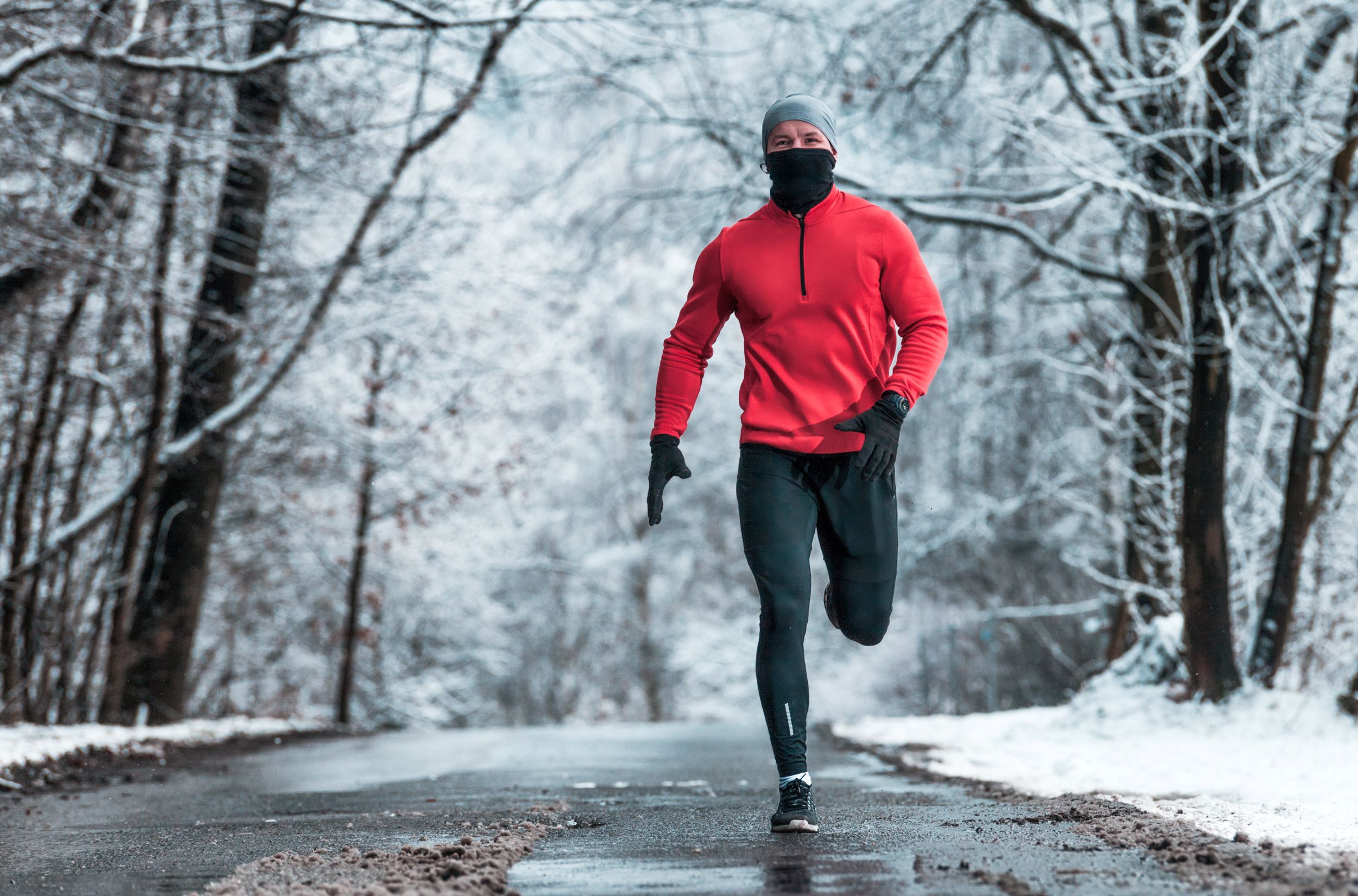As the days grow shorter and the temperatures drop, the thought of running outdoors can seem daunting. However, with the right winter running gear essentials, you can not only stay warm but also enjoy your runs despite the chilly weather. Winter running is not just about braving the elements; it’s about embracing a new challenge and experiencing the invigorating crisp air while staying active.
Having the appropriate gear is crucial to ensure your comfort and safety. From layering techniques that trap heat without causing overheating, to footwear designed to handle icy paths, the right equipment can make all the difference. Additionally, accessorizing with the right gloves, hats, and thermal socks can protect you from the biting cold and enhance your overall running experience.
At Run Just For Fun, we’re dedicated to helping you conquer the winter months with confidence. We’ll guide you through the must-have items and expert tips to keep you motivated and prepared. Winter running is an opportunity to discover new trails, maintain your fitness goals, and enjoy a unique seasonal perspective on your favorite routes.
Visit our website to learn more and get started today! Click here.
Importance of Proper Layering
One of the most critical aspects of winter running gear is proper layering. Layering allows you to regulate your body temperature efficiently, ensuring that you stay warm without overheating. The key to effective layering is to use a combination of materials that wick moisture, insulate, and protect against the wind and rain.
Start with a base layer made of moisture-wicking fabric such as merino wool or synthetic materials. This layer is crucial as it keeps sweat away from your skin, preventing you from getting cold. Avoid cotton as it retains moisture and can make you feel colder.
The mid-layer is responsible for insulation. Fleece is an excellent choice because it’s lightweight, breathable, and retains heat. Depending on the temperature, you might opt for a thicker or thinner mid-layer.
The outer layer, often referred to as the shell layer, protects you from the elements. Look for a jacket that is both windproof and water-resistant. This layer should also be breathable to allow moisture to escape, keeping you dry and comfortable.
By mastering the art of layering, you can adapt to varying weather conditions and maintain an optimal temperature throughout your run. Remember, the goal is to start your run feeling slightly cool; your body will warm up as you move. Proper layering not only enhances performance but also ensures you stay safe and enjoy your winter running experience to the fullest.
Choosing the Right Footwear
.jpg)
When it comes to winter running, choosing the right footwear can make all the difference in your comfort and performance. The primary goal is to keep your feet warm, dry, and well-supported while navigating through various winter conditions such as snow, ice, and slush.
First and foremost, look for running shoes with good traction. Ice and snow can create slippery surfaces, so shoes with aggressive tread patterns or rubber outsoles designed for winter conditions are essential. Some runners even opt for trail running shoes for their superior grip.
Next, consider the insulation of your footwear. While regular running shoes might suffice in mild winter conditions, you may need shoes with added insulation or a waterproof membrane for harsher climates. Brands often offer winter-specific running shoes that feature these elements to keep your feet warm and dry.
Don’t forget about gaiters. These accessories can be worn over your shoes to prevent snow and moisture from entering, adding an extra layer of protection. They are particularly useful when running in deep snow or wet conditions.
Finally, pay attention to your socks. Wool or synthetic moisture-wicking socks are ideal as they keep your feet dry and warm. Avoid cotton socks, as they retain moisture and can lead to cold, uncomfortable feet. Some runners even layer thin moisture-wicking socks under thicker wool socks for added warmth and protection.
By investing in the right winter running footwear, you can ensure that your feet remain comfortable and safe, allowing you to focus on the joy of running regardless of the weather conditions.
Essential Winter Running Accessories

To fully enjoy your winter runs, equipping yourself with the essential winter running accessories is crucial. These items not only enhance your comfort but also ensure your safety in the challenging winter conditions.
First and foremost, a good pair of running gloves is indispensable. Cold hands can quickly make a run unbearable. Look for gloves that offer a balance of warmth and breathability. Some gloves even come with touchscreen-compatible fingertips, allowing you to use your devices without taking them off.
A thermal hat or beanie is another must-have accessory. Since a significant amount of body heat is lost through the head, keeping it covered is essential. Choose a hat that wicks moisture away while providing insulation.
Next on the list are neck gaiters or buffs. These versatile accessories can be worn around your neck, pulled up to cover your mouth and nose, or even used as a headband. They help protect against cold winds and can be adjusted easily as you warm up during your run.
For those running in low-light conditions, visibility gear is non-negotiable. Reflective vests, armbands, and headlamps can significantly enhance your visibility to drivers and other runners. Safety should always be a priority, especially during the shorter daylight hours of winter.
Lastly, consider investing in hand warmers. These small packets can be slipped into your gloves or pockets for an extra boost of warmth during particularly cold runs. They are especially useful for longer runs where you might be exposed to the elements for extended periods.
By incorporating these essential winter running accessories into your gear, you can tackle your winter runs with confidence, comfort, and enhanced safety, making every step a leap towards fitness freedom.
Safety Tips for Winter Running

Running in winter presents unique challenges, but with the right safety tips for winter running, you can navigate these conditions securely. Prioritizing safety ensures that your fitness routine remains uninterrupted, even when the temperature drops.
First, always check the weather forecast before heading out. Knowing the expected conditions helps you dress appropriately and avoid potentially dangerous situations like severe storms or icy roads. If the weather looks too hazardous, consider rescheduling your run or opting for an indoor workout.
Visibility is crucial during the winter months when daylight is limited. Wear bright, reflective clothing and accessories to make yourself more visible to drivers and other pedestrians. A headlamp or clip-on light is also beneficial for illuminating your path and alerting others to your presence.
Traction is another key concern. Icy and snowy surfaces can be slippery, increasing the risk of falls and injuries. Equip your shoes with traction aids like Yaktrax or microspikes to improve your grip on slick surfaces. Additionally, choose running routes that are well-maintained and less likely to be hazardous.
Staying warm is essential, but you should also avoid overheating. Dress in layers that can be removed as you warm up. Start with a moisture-wicking base layer, add an insulating middle layer, and top it off with a windproof and waterproof outer layer. This way, you can adjust your clothing to match your exertion level and the weather conditions.
Hydration shouldn’t be overlooked just because it’s cold. Cold air can be dehydrating, and you’re still sweating even if it’s not as noticeable. Carry water with you or plan routes that include water stops. Drinking warm fluids before and after your run can also help maintain your body temperature.
Finally, always let someone know your running route and expected return time. Carry a phone for emergencies, and consider using a tracking app that allows others to monitor your location in real-time.
By following these safety tips, you can ensure that your winter running adventures are both enjoyable and secure, allowing you to embrace the joy of running year-round.
Maintaining Your Winter Running Gear

To get the most out of your winter running gear essentials, proper maintenance is crucial. Taking care of your gear not only prolongs its lifespan but also ensures optimal performance, keeping you safe and comfortable during your runs.
Footwear maintenance is paramount. After each run, clean your shoes to remove mud, snow, and salt. These elements can degrade the materials and reduce the traction of your shoes. Allow them to air dry completely, avoiding direct heat sources that can warp or damage them. You can stuff your shoes with newspaper to help absorb moisture and maintain their shape.
Caring for your running clothes is equally important. After a run, change out of your damp clothing immediately to prevent odors and bacteria growth. Follow the care instructions on the labels, typically washing in cold water and avoiding fabric softeners which can impede the moisture-wicking properties of the fabric. Hang dry your clothes to preserve their elasticity and fit.
Accessories such as gloves, hats, and buffs also require attention. Regularly wash these items to remove sweat and oils that can degrade the materials. For electronic accessories like headlamps, ensure the batteries are charged and check for any damage that could impact their functionality.
Additionally, inspect your gear regularly for signs of wear and tear. Look for frayed seams, worn-out soles, and damaged zippers. Addressing these issues promptly can prevent minor problems from becoming major ones, ensuring your gear remains reliable throughout the winter season.
Proper storage is also a key aspect of gear maintenance. Store your items in a cool, dry place to prevent mildew and deterioration. Avoid cramming your gear into tight spaces which can cause permanent creases and damage.
By following these maintenance tips, you can extend the life of your winter running gear and ensure it performs at its best, run after run. Ready to dive deeper into winter running? Visit our website to learn more and get started today!


